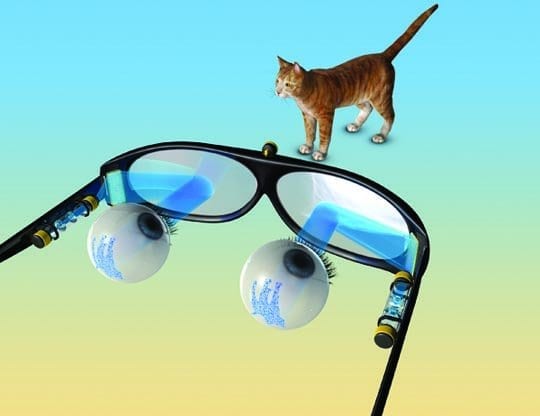
IPhone-connected hearing aids are just the beginning.
Dick Loizeaux recently found himself meandering through a noisy New York nightclub. This was unusual; Mr. Loizeaux, a 65-year-old former pastor, began suffering hearing loss nearly a decade ago, and nightclubs are not really his scene. “They’re the absolute worst place to hear anybody talk,” he said.
But this time was different. Mr. Loizeaux had gone to the club to test out the GN ReSound Linx, one of two new models of advanced hearing aids that can be adjusted precisely through software built into Apple’s iPhone. When he entered the club, Mr. Loizeaux tapped on his phone to switch his hearing aids into “restaurant mode.” The setting amplified the sound coming from the hearing aids’ forward-facing microphones, reducing background noise. To play down the music, he turned down the hearing aids’ bass level and bumped up the treble. Then, as he began chatting with a person standing to his left, Mr. Loizeaux tapped his phone to favor the microphone in his left hearing aid, and to turn down the one in his right ear.
The results were striking. “After a few adjustments, I was having a comfortable conversation in a nightclub,” Mr. Loizeaux told me during a recent phone interview — a phone call he would have had difficulty making with his older hearing aids. “My wife was standing next to me in the club and she was having trouble having the same conversation, and she has perfect hearing.”
It’s only a slight exaggeration to say that the latest crop of advanced hearing aids are better than the ears most of us were born with. The devices can stream phone calls and music directly to your ears from your phone. They can tailor their acoustic systems to your location; when the phone detects that you have entered your favorite sports bar, it adjusts the hearing aids to that environment.
The hearing aids even let you transform your phone into an extra set of ears. If you’re chatting with your co-worker across a long table, set the phone in front of her, and her words will stream directly to your ears.
When I recently tried out the Linx and the Halo, another set of iPhone-connected hearing aids made by the American hearing aid company Starkey, I was floored. Wearing these hearing aids was like giving my ears a software upgrade. For the first time, I had fine-grain control over my acoustic environment, the sort of bionic capability I never realized I had craved. I’m 35 and I have normal hearing. But if I could, I’d wear these hearing aids all the time.
IPhone-connected hearing aids are just the beginning.
Today most people who wear hearing aids, eyeglasses, prosthetic limbs and other accessibility devices do so to correct a disability. But new hearing aids point to the bionic future of disability devices.
As they merge with software baked into our mobile computers, devices that were once used simply to fix whatever ailed us will begin to do much more. In time, accessibility devices may even let us surpass natural human abilities. One day all of us, not just those who need to correct some physical deficit, may pick up a bionic accessory or two.
“There is a way in which this technology will give people with hearing loss the ability to outperform their normal-hearing counterparts,” said Dave Fabry, Starkey’s vice president for audiology and professional relations.
The Latest on: Bionic Future
[google_news title=”” keyword=”Bionic Future” num_posts=”10″ blurb_length=”0″ show_thumb=”left”]
via Google News
The Latest on: Bionic Future
- iPad (10th Gen) price drops ahead of Apple’s ‘Let Loose’ May 7 eventon April 29, 2024 at 10:24 pm
The Apple iPad (10th Gen) has received a price cut ahead of Apple’s “Let Loose” event, with several retailers now offering the base model of the iPad with 64 GB storage at an effective price of Rs ...
- Tyrese Gibson Reflects on Cut Action Scene in Morbius Film – Latest Updates on Superheroes in the Cinemaon April 29, 2024 at 10:43 am
Morbius cast member Tyrese Gibson has opened up about a significant fight scene that was notably absent from the final release of the movie, lamenting the loss of his character’s bionic arm prominence ...
- Bionic Bird Unveils X-Fly: The Next Frontier in Ornithopter Technologyon April 29, 2024 at 9:09 am
About Us: Bionic Bird stands at the forefront of biomimetic flight innovation, inspired by a family legacy that spans generations. From the pioneering TIM to the advanced X-Fly, Bionic Bird continues ...
- Top Phones to Expect in 2024 From Apple, Google and Otherson April 29, 2024 at 5:00 am
As for what to expect, artificial intelligence will likely be a big theme in this year's phones. We've already seen that with the Galaxy S24 family, which is the first to include Samsung's new Galaxy ...
- Omoda and Jaecoo to launch highly bionic gait-walking roboton April 29, 2024 at 3:00 am
Chery Automobile has developed an intelligent service-oriented bipedal robot called Mornine, which makes its global debut at the company’s ecological press conference on April 30. ROBOTICS company ...
- Everything Coming To and Leaving Netflix in May 2024on April 29, 2024 at 2:00 am
With April coming to an end, Netflix unveiled its slate of new programming for May 2024.
- Omoda & Jaecoo to unveil the world's first highly bionic gait-walking roboton April 28, 2024 at 11:47 pm
As the global energy transition accelerates, OMODA & JAECOO fully leverages its product and technological potential. The upcoming Beijing International Automotive Exhibition will feature the fearless ...
- Apple iPad (10th Generation): with A14 Bionic chip, Now 17% Offon April 28, 2024 at 8:05 am
Welcome to the future of tablet technology with the 10th Generation Apple iPad that's currently available on Amazon with a fantastic 17% discount. Infused with the A14 Bionic chip, an astonishing 10.9 ...
- The Best iPads, According To An Apple Experton April 27, 2024 at 8:59 am
Whether for work or for play, the best iPads feature powerful processors and long battery life. Here our top picks.
- New on Netflix in May 2024 — all the new shows and movies to watchon April 26, 2024 at 9:00 pm
May 2024 offers a sizeable slate of new Netflix movies and shows including "Bridgerton" season 3, "Atlas" and more.
via Bing News










